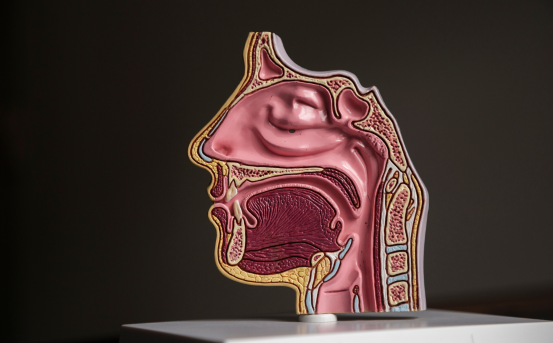The biliary tract, also known as the biliary system, plays a crucial role in the digestion and excretion of bile, a digestive fluid produced by the liver. It consists of the bile ducts inside and outside the liver, the gallbladder, and associated ducts that carry bile to the small intestine. When this system is disrupted due to gallstones, infections, strictures, or tumors, surgery may be required to restore its function or remove diseased components.
Types of Biliary tract surgery range from routine procedures like gallbladder removal to complex reconstructions or cancer resections. These surgeries are often performed by hepatobiliary surgeons or gastrointestinal specialists and may involve minimally invasive or open techniques. This comprehensive guide explores the various types of biliary tract surgery, their purposes, and what patients can expect.
Why Is Biliary Tract Surgery Performed?
Biliary tract surgery is primarily indicated in the following situations:
- Gallstones causing pain or infection
- Inflammation of the gallbladder (cholecystitis)
- Blockage or narrowing of bile ducts (strictures)
- Injury to bile ducts during surgery
- Bile duct cancers (cholangiocarcinoma)
- Congenital defects like choledochal cysts
- Bile leaks or fistulas
- Severe pancreatitis associated with bile duct obstruction
Early surgical intervention in such cases is important to prevent complications such as jaundice, liver damage, sepsis, or even death.
Types of Biliary Tract Surgery
Depending on the condition and its severity, different types of surgeries are performed on the biliary tract. These procedures vary in complexity, surgical approach, and recovery time.
Cholecystectomy (Gallbladder Removal)
Cholecystectomy is the most commonly performed biliary surgery. It is typically done to treat symptomatic gallstones or cholecystitis.
There are two primary techniques:
- Laparoscopic cholecystectomy :- This minimally invasive surgery uses small incisions and a camera to remove the gallbladder. It is the preferred method due to shorter recovery time and fewer complications.
- Open cholecystectomy :- Performed when laparoscopic surgery is not feasible, such as in cases of severe inflammation or previous abdominal surgery. It involves a larger incision and longer recovery.
Cholecystectomy is highly effective, and most patients return to normal life without the gallbladder, as bile flows directly from the liver into the intestine.
Common Bile Duct Exploration (CBDE)
In cases where gallstones migrate into the common bile duct, they can obstruct bile flow and cause jaundice, infection, or pancreatitis. Common bile duct exploration may be required to locate and remove these stones.
This can be done:
- Intraoperatively, during a cholecystectomy, using laparoscopic tools
- Postoperatively, through an endoscopic or open surgical approach if stones persist
CBDE ensures proper bile drainage and prevents recurrent symptoms.
Biliary Bypass Surgery
This is a complex surgical procedure done when the bile duct is blocked and cannot be repaired directly. The surgeon creates a new pathway for bile to flow from the liver to the small intestine, bypassing the obstruction.
There are different types of biliary bypass procedures, including:
- Hepaticojejunostomy :- A loop of the small intestine (jejunum) is connected directly to the hepatic duct.
- Choledochojejunostomy :- The common bile duct is connected to the jejunum.
- Choledochoduodenostomy :- The bile duct is joined to the duodenum.
These procedures are often used in cases of cancer, bile duct strictures, or after injury during previous surgery.
Bile Duct Resection and Reconstruction
In some cases, a portion of the bile duct needs to be surgically removed due to cancer, traumatic injury, or severe scarring. The surgeon may:
- Resect the affected portion of the bile duct
- Perform a reconstruction to restore bile flow (e.g., hepaticojejunostomy)
This type of surgery is particularly common in cholangiocarcinoma (bile duct cancer), where early and complete surgical removal offers the best chance of long-term survival.
Choledochal Cyst Excision
Choledochal cysts are congenital abnormalities of the bile ducts, often diagnosed in childhood or early adulthood. These cysts can lead to infection, stone formation, pancreatitis, or bile duct cancer if untreated.
Surgical treatment involves:
- Complete removal of the cyst
- Reconstruction of the bile duct using a segment of the intestine
Excision is usually curative and prevents long-term complications.
Surgery for Bile Duct Injuries
Injuries to the bile ducts can occur during gallbladder surgery or abdominal trauma. If the bile duct is cut, narrowed, or leaking, it may require surgical repair.
Approaches may include:
- Direct suturing (if the injury is small and detected early)
- Biliary reconstruction (e.g., hepaticojejunostomy) for major or delayed injuries
These procedures are best performed at centers specializing in hepatobiliary surgery due to their complexity.
Biliary Drainage Procedures
When immediate surgery is not possible or the patient is critically ill, temporary biliary drainage may be performed to relieve bile obstruction.
Options include:
- Percutaneous transhepatic biliary drainage (PTBD) :- A catheter is inserted through the skin into the bile ducts to drain bile externally.
- Endoscopic biliary stenting :- A stent is placed to keep the bile duct open and allow bile to flow.
These interventions help manage symptoms and stabilize the patient before definitive surgery.
Liver Resection or Transplantation (for Advanced Disease)
In cases where bile duct cancer extends into the liver or where bile ducts within the liver are involved (as in primary sclerosing cholangitis), liver resection or transplantation may be necessary.
- Liver resection involves removing the diseased lobe of the liver along with the bile ducts.
- Liver transplantation is considered for irreversible liver damage or unresectable bile duct cancers.
These major procedures require multidisciplinary planning and are done in specialized centers.
How the Type of Surgery Is Chosen
Several factors influence the choice of biliary tract surgery:
- Underlying disease (benign vs malignant)
- Severity and location of the condition
- Previous surgeries or scarring
- Patient’s overall health
- Availability of surgical expertise and technology
Doctors may use imaging studies like ultrasound, CT, MRCP, or ERCP to assess the biliary tract and determine the most appropriate surgical option.
Postoperative Care and Recovery
Recovery after biliary tract surgery depends on the procedure performed. Minimally invasive surgeries generally allow faster return to daily activities. Complex surgeries like bypass or resection may require longer hospital stays, drain care, and close follow-up.
Common postoperative recommendations include:
- Avoiding fatty foods initially
- Monitoring for signs of infection
- Regular liver function tests
- Imaging follow-up to ensure proper bile flow
In cases of cancer, chemotherapy or radiation may be part of the treatment plan post-surgery.
Risks and Complications
As with any surgery, biliary tract procedures carry potential risks:
- Infection
- Bile leak
- Bleeding
- Injury to adjacent organs
- Biliary strictures or recurrent obstruction
Skilled surgical teams and proper postoperative care reduce the risk of complications significantly.
Conclusion
Biliary tract surgery encompasses a wide range of procedures aimed at treating conditions that obstruct or damage the biliary system. From routine gallbladder removal to complex bile duct reconstructions and cancer resections, these surgeries restore normal bile flow and prevent severe complications.
Choosing the right surgical option depends on the underlying diagnosis, the patient’s health, and the surgeon’s expertise. With timely intervention and proper care, most patients recover well and enjoy a significant improvement in quality of life.
If you’re experiencing symptoms such as jaundice, abdominal pain, or digestive issues, consult a hepatobiliary specialist. Early diagnosis and the right surgical plan can make a critical difference in outcome.























